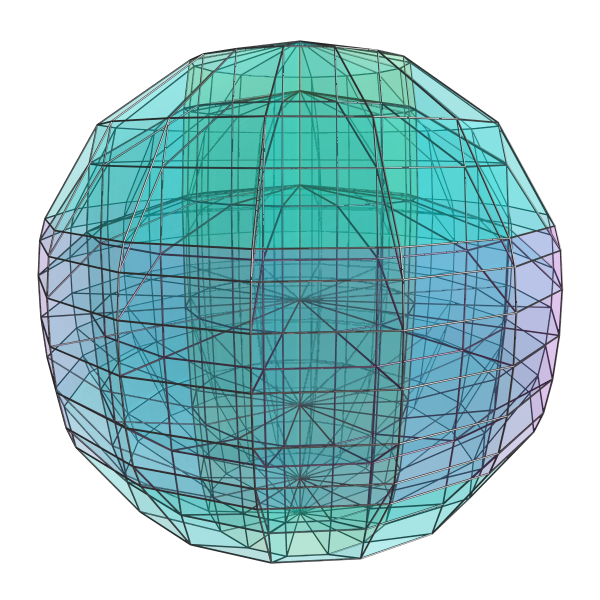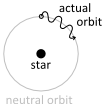
Since I know that if you only see the wireframe you wouldn't be able to tell (not easily anyway) where the tori are, I've painstakingly picked out two of them and colored them in yellow and magenta, respectively. Each of these represent a duocylindrical layer of the 3-sphere (well, at least the ridge of the duocylinder; the bounding manifolds are obviously inside the 3-sphere, not on its surface). If you look carefully, you can see a third duocylindrical torus between these two, projected to a slightly inflated cylinder. The yellow and magenta duocylinders, of course, are cartesian products of circles with unequal radii.
Also, you will notice a vertical line running through the 3D image; that is one of the 2 ring-poles in this subdivision of the 3-sphere. So first, you start with that ring, then the next layer is the yellow torus, then the torus between the yellow and magenta tori, then the magenta torus, and then the other ring-pole (not visible here 'cos i'm using perspective projection, and it projects to the far side of the 3-sphere, just barely on the limb -- but you can imagine it as the circle running through the center of the magenta torus).
If you regard the yellow torus's ringpole as "north" and the magenta torus's ringpole as "south", then the yellow region would be the "northern torosphere" (toroidal analog of hemisphere), and the magenta region would be the "southern torosphere", and the unmarked torus in the middle would be the equator (toroquator?), which corresponds with the ridge of a duocylinder with equal radii. The cyan regions around it would be the "torotropics".
You can see that to cross from the northern torosphere to the southern torosphere, you must pass the toroquator.
Also note that the angle between the northern ringpole and the southern ringpole from the center of the 3-sphere is 90°, so the torospheres are not antipodal, but rather orthogonal. If you walk from the northern ringpole to the southern ringpole, you have only covered 1/4 of the corresponding great circle on the 3-sphere (whereas on earth, walking from north pole to south covers 1/2 of a great circle).
Now, the radial lines that you see emanating from the northern ringpole to the magenta region are geodesics connecting the two ringpoles (i.e., they are the shortest path to get from any given point on the northern ringpole to the southern ringpole -- there are many such paths, each of which gets you to a different point on the southern ringpole). All of these paths are exactly 1/4 of the 3-sphere's great circles.
If you walk along one of these geodesics for a full circle, you will encounter each ringpole twice: first you start from point A in the first ringpole, pass the toroquator, then point B in the second ringpole, then pass the toroquator again, then reach point C in the first ringpole (which is antipodal to point A), then pass the toroquator the 3rd time, and reach point D in the second ringpole (which is antipodal to point B), then pass the toroquator again the last time, before you arrive back at point A where you started.
This also means that to get from point A to its antipode (on the same ringpole), you can either walk along the ringpole itself, or you can take a grand tour down to the other ringpole and back -- both are exactly the same distance.

I'm telling you, Keiji, this is an awesome setting for creating a truly interesting 4D culture/story.






